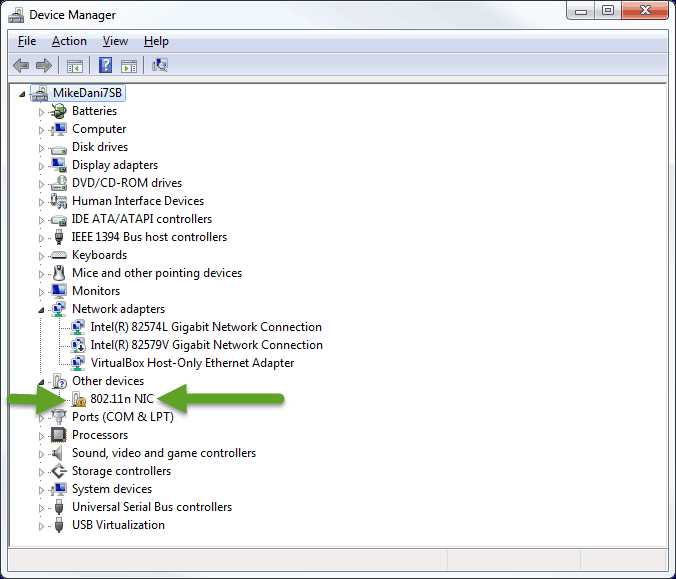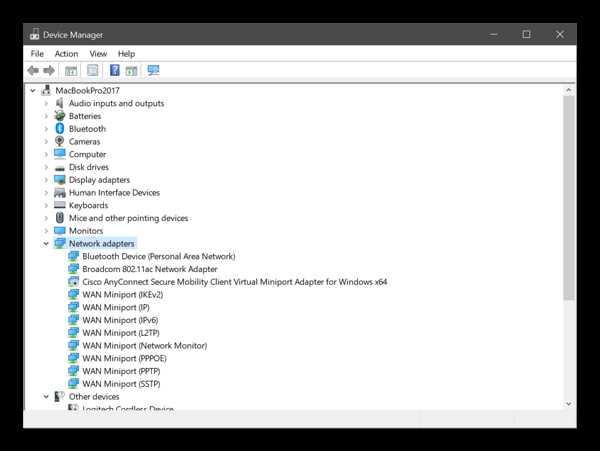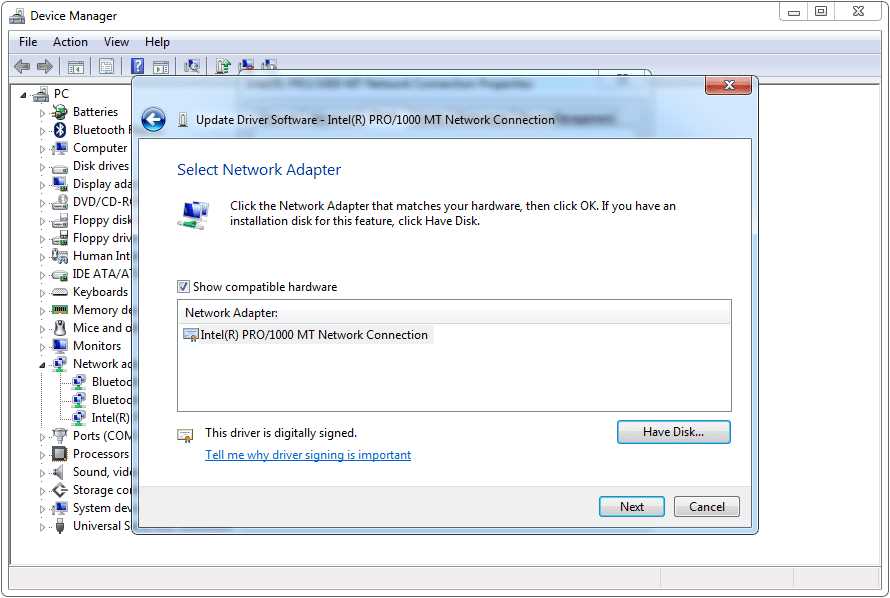
Keeping your drivers up to date is crucial for the smooth functioning of your Windows 7 operating system. Drivers are software programs that allow your computer to communicate with hardware devices such as printers, graphics cards, and sound cards. Outdated drivers can lead to performance issues, compatibility problems, and even system crashes. In this step-by-step guide, we will show you how to update your Windows 7 drivers and ensure that your computer is running at its best.
Step 1: Identify the drivers that need updating
The first step in updating your drivers is to identify which ones need to be updated. You can do this by checking the Device Manager, which is a built-in Windows tool that lists all the hardware devices connected to your computer. Look for any devices with a yellow exclamation mark, as this indicates that the driver is outdated or missing. Make a note of the devices that need updating.
Step 2: Download the latest drivers
Once you have identified the drivers that need updating, you will need to download the latest versions from the manufacturers’ websites. Visit the websites of the hardware manufacturers and navigate to the support or downloads section. Look for the drivers that match your specific hardware model and operating system (Windows 7). Download the drivers to a location on your computer where you can easily find them.
Step 3: Install the updated drivers
After downloading the updated drivers, you will need to install them on your computer. To do this, open the Device Manager again and right-click on the device that needs updating. Select “Update Driver Software” from the context menu. Choose the option to browse your computer for driver software and navigate to the location where you saved the downloaded drivers. Follow the on-screen instructions to complete the installation process.
Step 4: Restart your computer
Once the installation is complete, it is recommended to restart your computer. This will ensure that the new drivers are properly loaded and that any changes take effect. After the restart, check the Device Manager again to confirm that the drivers have been successfully updated. If there are no more devices with yellow exclamation marks, then you have successfully updated your Windows 7 drivers.
Updating your Windows 7 drivers is a simple yet important task that can greatly improve the performance and stability of your computer. By following this step-by-step guide, you can ensure that your drivers are always up to date and that your Windows 7 operating system runs smoothly.
Why Updating Windows 7 Drivers is Important

Updating drivers on your Windows 7 operating system is crucial for several reasons. First and foremost, drivers are essential software components that allow your computer’s hardware to communicate with the operating system. Without proper drivers, your hardware may not function correctly or may not work at all.
Regularly updating your Windows 7 drivers ensures that your computer is equipped with the latest bug fixes, performance improvements, and security patches. Outdated drivers can lead to system crashes, freezes, and other stability issues. By keeping your drivers up to date, you can enhance the overall performance and reliability of your computer.
Another reason to update your Windows 7 drivers is compatibility. As technology advances, new hardware and software are released, and older drivers may not be compatible with these new components. By updating your drivers, you can ensure that your computer remains compatible with the latest hardware and software, allowing you to take advantage of new features and capabilities.
Updating drivers also helps to resolve common issues and errors that you may encounter while using your computer. Many driver updates include fixes for known issues, such as audio or video playback problems, network connectivity issues, or printer malfunctions. By installing these updates, you can troubleshoot and resolve these issues, improving your overall user experience.
In conclusion, updating your Windows 7 drivers is essential for optimal performance, stability, compatibility, and troubleshooting. By keeping your drivers up to date, you can ensure that your computer functions properly and takes advantage of the latest advancements in hardware and software technology.
Improved Performance and Stability

Updating your Windows 7 drivers can significantly improve the performance and stability of your computer. Outdated drivers can cause various issues, such as slow system performance, frequent crashes, and compatibility problems with new software and hardware.
By updating your drivers, you ensure that your operating system can communicate effectively with your hardware devices. This allows for smoother and more efficient operation, resulting in faster response times and improved overall performance.
Additionally, updated drivers often include bug fixes and security patches, which can enhance the stability of your system. These updates address known issues and vulnerabilities, reducing the risk of crashes and security breaches.
Updating your drivers is a simple process that can be done in a few easy steps. By regularly checking for driver updates and installing them, you can keep your Windows 7 system running smoothly and efficiently.
Enhanced Compatibility with New Software and Hardware

Updating your Windows 7 drivers is crucial to ensure enhanced compatibility with new software and hardware. As technology advances, new software and hardware are constantly being released, and these often require updated drivers to function properly.
By keeping your drivers up to date, you can ensure that your Windows 7 operating system is compatible with the latest software and hardware. This means that you can take advantage of new features, improved performance, and enhanced security that these updates provide.
Updating your drivers is a relatively simple process that can be done in a few steps. First, you need to identify the drivers that need to be updated. You can do this by checking the Device Manager in the Control Panel, which lists all the hardware devices installed on your computer.
Once you have identified the drivers that need updating, you can visit the manufacturer’s website to download the latest versions. Most manufacturers provide driver downloads on their support pages, and you can usually find the drivers by searching for your specific hardware model.
After downloading the updated drivers, you can install them by running the installer file. The installation process may vary depending on the driver, but it typically involves following the on-screen instructions and restarting your computer.
Updating your Windows 7 drivers regularly is important to ensure that your computer is running smoothly and efficiently. It can help prevent compatibility issues with new software and hardware, and it can also improve the overall performance and stability of your system.
So, if you want to keep your Windows 7 system up to date and ensure compatibility with the latest software and hardware, make sure to regularly update your drivers. It’s a simple and effective way to optimize your computer’s performance and ensure a seamless user experience.
Increased Security and Protection

Updating drivers is an essential step in maintaining the security and protection of your Windows 7 system. Outdated drivers can leave your computer vulnerable to security threats and malware attacks. By regularly updating your drivers, you ensure that your system has the latest security patches and bug fixes, which can help prevent unauthorized access and keep your personal information safe.
When you update your drivers, you also benefit from improved stability and performance. Updated drivers are often optimized to work more efficiently with the latest software and hardware, resulting in smoother operation and fewer crashes. This can be especially important for gamers and users who rely on resource-intensive applications.
Furthermore, updating your drivers can help resolve compatibility issues. As new versions of Windows 7 are released, some older drivers may no longer be compatible with the operating system. By updating your drivers, you can ensure that your devices and peripherals continue to work seamlessly with Windows 7, avoiding any potential compatibility problems.
Overall, keeping your drivers up to date is crucial for maintaining the security, stability, and performance of your Windows 7 system. With the step-by-step guide on how to update drivers, you can easily ensure that your computer is always protected and running at its best.
Step-by-Step Guide to Update Windows 7 Drivers

Updating drivers on your Windows 7 operating system is crucial to ensure optimal performance and compatibility with the latest software and hardware. In this step-by-step guide, we will walk you through the process of updating your Windows 7 drivers.
Step 1: Identify the drivers that need to be updated
Before updating your drivers, it is important to identify which drivers need to be updated. You can do this by checking the Device Manager, which lists all the hardware devices installed on your computer. Look for any devices with a yellow exclamation mark, as this indicates that the driver needs to be updated.
Step 2: Download the latest drivers
Once you have identified the drivers that need to be updated, visit the manufacturer’s website to download the latest drivers. Make sure to download the drivers that are compatible with your specific version of Windows 7.
Step 3: Install the drivers
After downloading the drivers, locate the installation file and double-click on it to begin the installation process. Follow the on-screen instructions to complete the installation. It is recommended to restart your computer after installing the drivers to ensure that the changes take effect.
Step 4: Update drivers through Windows Update
In addition to manually updating drivers, you can also use Windows Update to automatically update your drivers. Open the Control Panel, go to the Windows Update section, and click on “Check for updates.” Windows will then search for any available driver updates and install them for you.
Step 5: Verify driver updates
After updating your drivers, it is important to verify that the updates were successful. You can do this by checking the Device Manager again and ensuring that there are no devices with yellow exclamation marks. Additionally, you can test the functionality of your hardware devices to ensure that they are working properly.
Step 6: Regularly check for driver updates
Updating drivers is an ongoing process, as new updates are released regularly. It is important to regularly check for driver updates and install them to keep your Windows 7 system running smoothly and efficiently.
| Step | Description |
|---|---|
| Step 1 | Identify the drivers that need to be updated |
| Step 2 | Download the latest drivers |
| Step 3 | Install the drivers |
| Step 4 | Update drivers through Windows Update |
| Step 5 | Verify driver updates |
| Step 6 | Regularly check for driver updates |
Identify the Drivers that Need Updating

Updating drivers on your Windows 7 computer is essential to ensure optimal performance and compatibility with the latest software and hardware. Here’s how you can identify the drivers that need updating:
- Open the Start menu and click on “Control Panel”.
- In the Control Panel window, select “Device Manager”.
- Device Manager will display a list of all the hardware devices installed on your computer.
- Expand each category to view the devices under it.
- Look for any devices with a yellow exclamation mark or a red X icon next to them. These symbols indicate that the device drivers are outdated or not installed correctly.
- Right-click on the device with the outdated driver and select “Update Driver Software”.
- Choose the option to search automatically for updated driver software. Windows will then search online for the latest driver updates for that device.
- If Windows finds an updated driver, it will automatically download and install it.
- Repeat this process for each device with an outdated driver.
By following these steps, you can easily identify the drivers that need updating on your Windows 7 computer. Keeping your drivers up to date will help improve system stability, fix bugs, and enhance overall performance.

